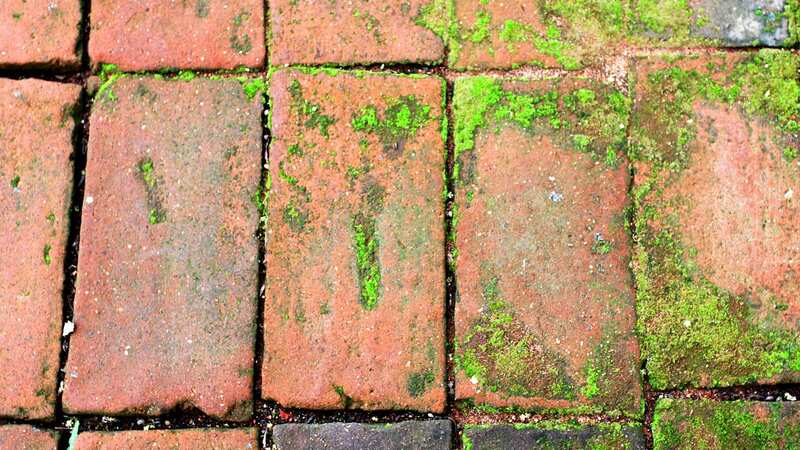Monty Don shares the 'best way' to remove slippery algae from patios

This November, there is a lot to do in your garden to get it ready to handle the cold - and quickly approaching - winter months. Tender plants must be protected from the cold, and bulbs need to be planted so that once the optimism of spring finally arrives your green space is filled with cheerful blooms.
The fallen leaves can be collected to turn into leafmould - a soil conditioner and compost - and to make any paved areas in your garden, like patios or paths, less slippery. Algae can easily grow on paved areas during the wet months. Particularly beneath fallen leaves, if they are left to settle on it for a long time. This can cause a serious health hazard in your garden and greatly reduce your enjoyment of it.
Paved gardens can certainly split opinion for green space enthusiasts, especially when someone chooses to pave the entire thing over. However, for those with little time to dedicate to their garden or particularly anyone who would struggle physically to maintain a garden filled with turf and beds, a paved area or garden can be the better option.
Paved paths also provide easy access between beds or area of your garden and a patio area can be used as a great entertaining space. Because they have the reputation of being low maintenance, it's easy to assume that you don't need to tackle them before the winter, but November is actually an important time to give them a good clean - according to expert horticulturalist Monty Don.
Writing on his website, Don lists cleaning paved areas as a crucial job to crack on with in your garden this month. "At this time of year brick and stone paths can be very slippery and dangerous. This is due to algae that grows on the surface," the TV presenter explains, "especially if wet and shaded and at this time of year they may stay wet and slippery for months."
 Make-up artist's eyeshadow trick to get 'Charlotte Tilbury' look for less money
Make-up artist's eyeshadow trick to get 'Charlotte Tilbury' look for less money
He recommends tackling this by hiring a power washer and then brushing in sand to the brick or stone surface. "The best way to reduce the slipperiness is to wash off the algae with a pressure hose (which can be hired by the day). When this is done brush in sharp sand. If the path is brick or stone the porous surface will absorb some of the sand."
Power washing your paved paths or patios can dislodge the the grout between the tiles or bricks, so you need to be careful while undertaking this task. It's best to try and avoid the joints themselves with your jet. The experts at London Stone advise that you sweep the area first, then using a medium pressure wash the area at a "diagonal to the lie of the slabs. This ensures you don’t run the jet along the joints." They also explain that it's better to do multiple washes at a lower pressure than one high pressure blast, which could damage the area.
Brushing sand in afterwards is an essential part of the job, because it reinforced the joints where any grout could have been dislodged during the washing process and stops any structural damage. Don explains that: "A quicker -but still quite laborious - alternative is simply to work sand in with a stiff brush without the washing. Either way you have a very effective way of making a path safe without resorting to chemicals."
Do you have a story to tell? Email: emma.mackenzie@reachplc.com
Read more similar news:
Comments:
comments powered by Disqus

































